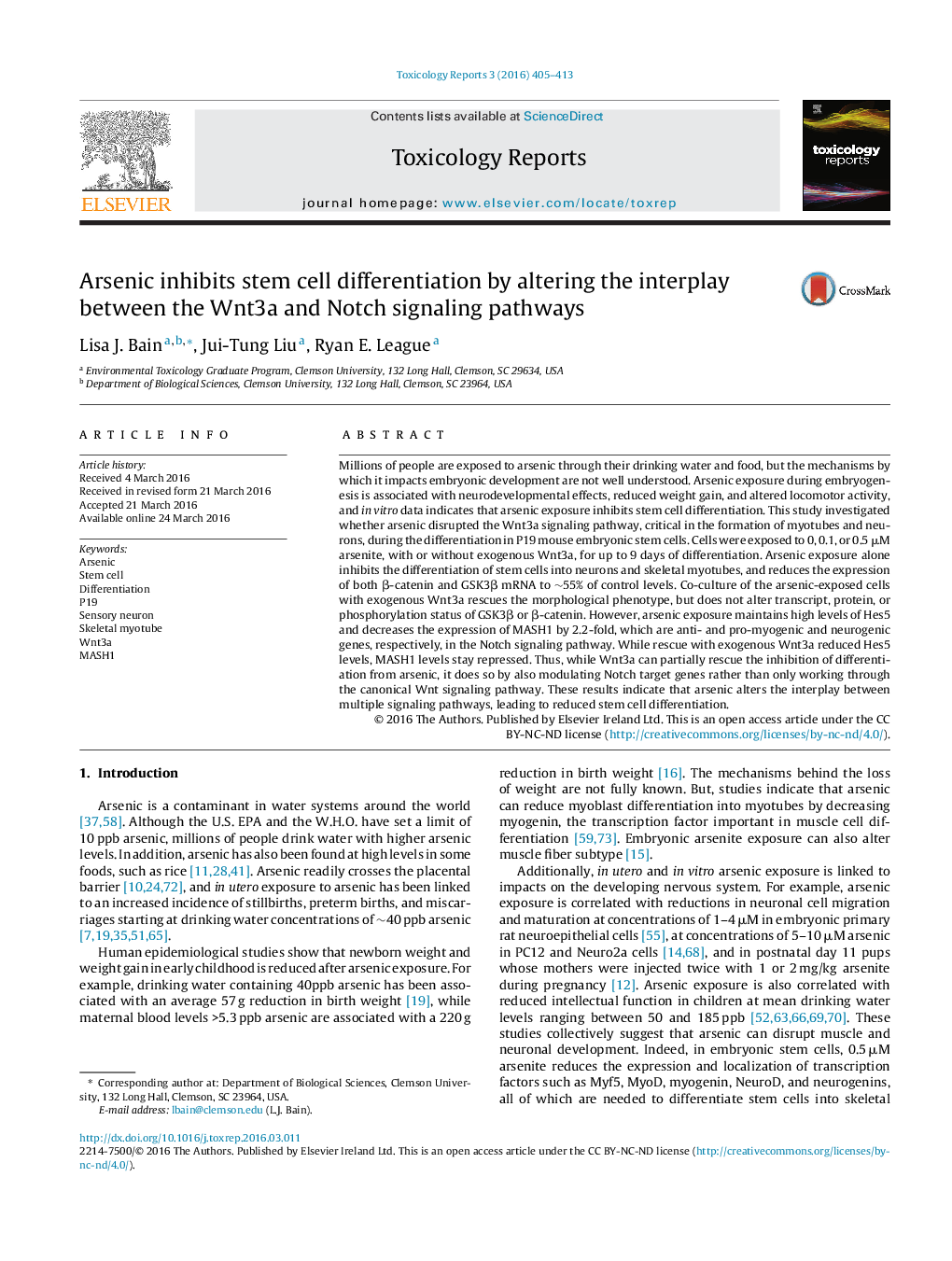| کد مقاله | کد نشریه | سال انتشار | مقاله انگلیسی | نسخه تمام متن |
|---|---|---|---|---|
| 2572146 | 1561191 | 2016 | 9 صفحه PDF | دانلود رایگان |
Millions of people are exposed to arsenic through their drinking water and food, but the mechanisms by which it impacts embryonic development are not well understood. Arsenic exposure during embryogenesis is associated with neurodevelopmental effects, reduced weight gain, and altered locomotor activity, and in vitro data indicates that arsenic exposure inhibits stem cell differentiation. This study investigated whether arsenic disrupted the Wnt3a signaling pathway, critical in the formation of myotubes and neurons, during the differentiation in P19 mouse embryonic stem cells. Cells were exposed to 0, 0.1, or 0.5 μM arsenite, with or without exogenous Wnt3a, for up to 9 days of differentiation. Arsenic exposure alone inhibits the differentiation of stem cells into neurons and skeletal myotubes, and reduces the expression of both β-catenin and GSK3β mRNA to ∼55% of control levels. Co-culture of the arsenic-exposed cells with exogenous Wnt3a rescues the morphological phenotype, but does not alter transcript, protein, or phosphorylation status of GSK3β or β-catenin. However, arsenic exposure maintains high levels of Hes5 and decreases the expression of MASH1 by 2.2-fold, which are anti- and pro-myogenic and neurogenic genes, respectively, in the Notch signaling pathway. While rescue with exogenous Wnt3a reduced Hes5 levels, MASH1 levels stay repressed. Thus, while Wnt3a can partially rescue the inhibition of differentiation from arsenic, it does so by also modulating Notch target genes rather than only working through the canonical Wnt signaling pathway. These results indicate that arsenic alters the interplay between multiple signaling pathways, leading to reduced stem cell differentiation.
Journal: Toxicology Reports - Volume 3, 2016, Pages 405–413
